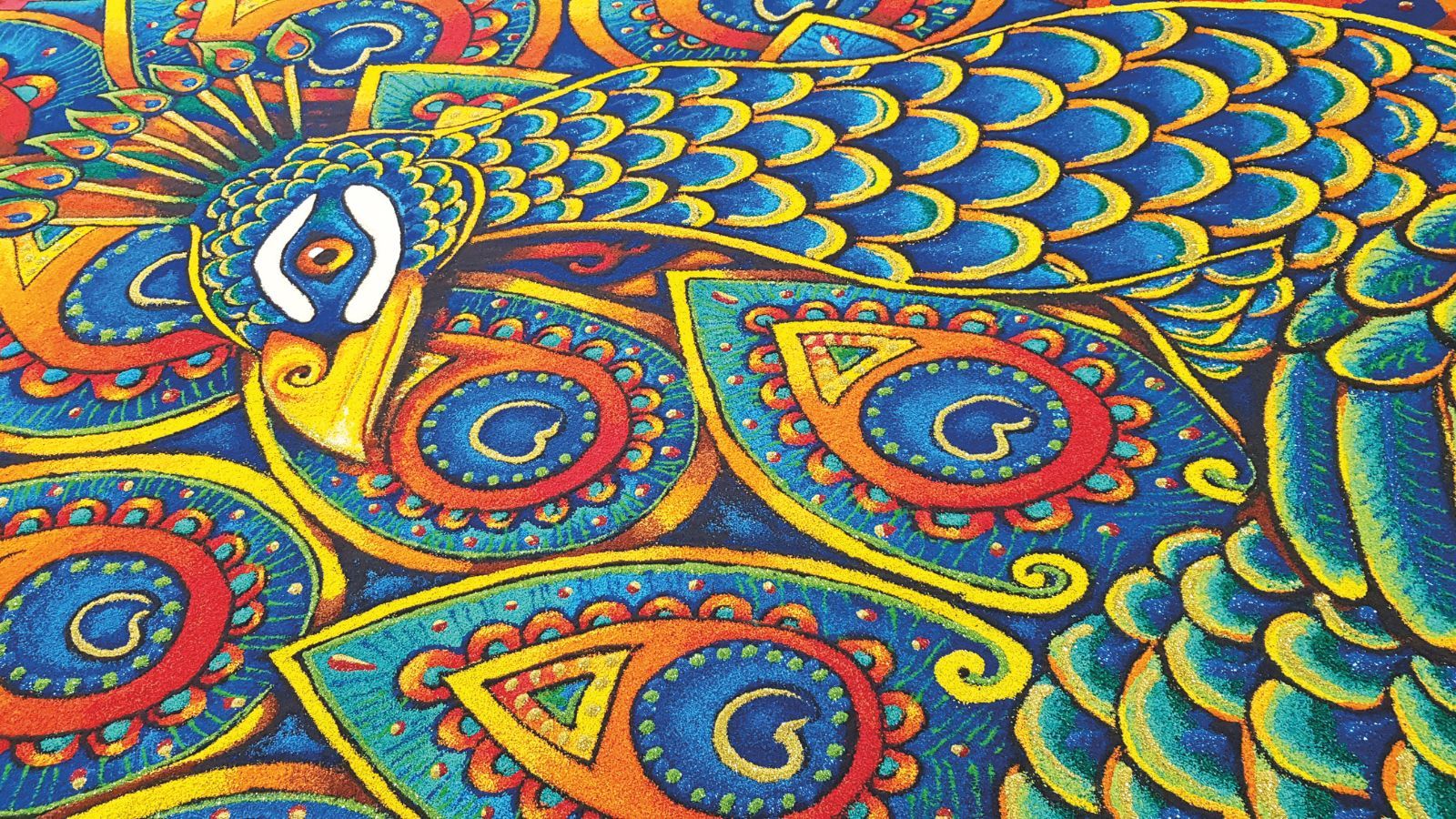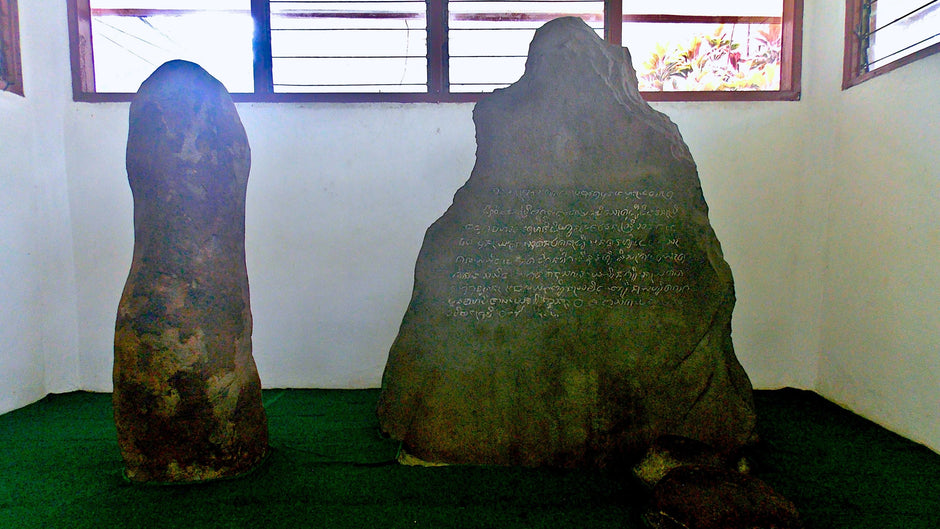Kolam is the art of drawing symmetrical patterns originating from South India, particularly Tamil Nadu. These patterns are created by hand-connecting dots of rice into geometric shapes, usually by women, every morning in front of their homes. The medium used is rice flour or a white powder, which also serves as food for small creatures like ants. This tradition is not only decorative but also part of a ritual to purify the home and welcome positive energy and prosperity.
 Photo Documentation of Indian Women Drawing Kolam by McKay Savage , CC BY 2.0
Photo Documentation of Indian Women Drawing Kolam by McKay Savage , CC BY 2.0
The ritual begins with cleaning the floor in front of the door, sometimes wetting it with water mixed with cow dung, considered sacred. The kolam patterns are drawn by gently and precisely applying a fine powder from the fingers, creating beautiful designs without the aid of tools. This practice reflects inner balance and serves as a form of visual meditation for the women who perform it daily. Kolam designs often depict symbols of nature, astrology, and spiritual protection against negative forces.
 (1) Peacock Picture Pond Documentation by By Priyadharshini Mohanraj , CC BY-SA 4.0 , (2) Pond Documentation by Elph, Public Domain
(1) Peacock Picture Pond Documentation by By Priyadharshini Mohanraj , CC BY-SA 4.0 , (2) Pond Documentation by Elph, Public Domain
Kolams are not only aesthetic art but also imbued with ecological and spiritual significance. Using natural materials like rice flour, this art form creates a direct connection between humans and the natural world. Many women view kolams as an expression of gratitude to Mother Earth. Kolams serve as a symbol of ecological responsibility, emphasizing that every small act, such as feeding the living creatures on the land, is part of a sustainable lifestyle.
 (1) Pond Documentation by Praveenapraviii , CC0 . (2) Pond Documentation by PulauKakatua19 , CC BY-SA 4.0
(1) Pond Documentation by Praveenapraviii , CC0 . (2) Pond Documentation by PulauKakatua19 , CC BY-SA 4.0
Culturally, kolams reflect the inner state of the creator. Neat and intricate patterns indicate harmony and well-being, while rushed or unfinished patterns can reflect inner restlessness. Through kolams, South Indian women express their creativity while maintaining a spiritual connection with nature and their household. This tradition continues to be preserved across generations as a living cultural heritage.
Written by: Noverdy R
Reference:
- Rathi, S. (2020, April 20). Female Aesthetics and Ecology Connect in Kolam. Sahapedia .
- The Womb. (2021, September 21). Rangoli: An Overlooked Women's Art Form. The Womb .
- Perumal, V. (nd). Kolam – Tamil Nadu's Traditional Floor Art . FolkCanvas .








